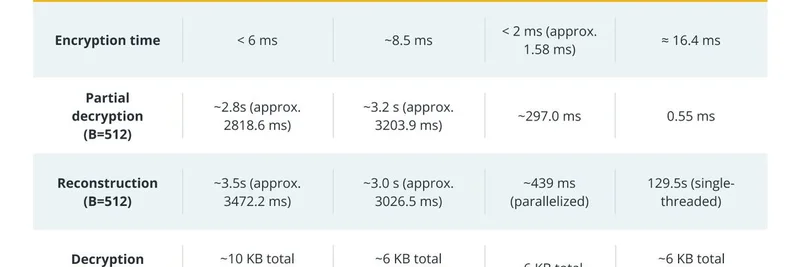Shutter Network just dropped a gem of a shoutout on X, praising a deep-dive Cointelegraph research piece about Batched Threshold Encryption (BTE)—a cryptographic wizardry that's poised to make DeFi way fairer and safer. If you're knee-deep in meme token flips or just dipping your toes into blockchain, this is the kind of tech that could save your portfolio from sneaky sandwich attacks during those wild pump-and-dump moments.
Let's break it down simply: In the wild west of Ethereum, miners (or validators, post-Merge) can peek at pending transactions in the mempool and exploit them. Think frontrunning—where a bot jumps ahead of your buy order to snag a better price—or sandwich attacks, squeezing you between two trades for profit. It's extractive MEV (Maximal Extractable Value) at its ugliest, and it hits meme traders hardest when liquidity is thin and prices swing like a pendulum.
Enter encrypted mempools: Transactions stay hidden until they're bundled into a block and finalized. No more peeking. But here's the rub—traditional encryption setups were clunky, with high latency, collusion risks among decryptors, and setups that felt like herding cats. Shutter Network, the folks building default protection against this mess, is all about fixing that. Their recent nod highlights how fresh innovations are cracking these barriers wide open.
That chart from Cointelegraph? It's a showdown of BTE evolutions. The star is BEAST-MEV, an upgrade that slashes decryption to under 1 second for about 500 transactions— that's a full Ethereum block's worth. We're talking just 6KB of communication overhead and a "silent, non-interactive" setup that doesn't require everyone to chat beforehand. Compare that to older models dragging on for minutes with megabytes of data. Game-changer.
Diving deeper, Shutter's own blog post from August ties this all together. They spotlight not just BTE but a toolkit of advancements:
Secret Sharing with Snitching (SSS): Imagine decryptors forced to "snitch" if they collude early—proofs make it traceable, so bad actors get punished via smart contracts or insurance stakes.
Self-Incriminating Proofs and Traceable Encryption: One sneaky decryptor spills the beans on the whole crew, enabling on-chain penalties. No more hiding in the shadows.
Silent Setup Threshold Encryption: Key holders generate shares independently, letting users pick trusted decryptors on the fly without expensive group key ceremonies. Flexible and user-centric—perfect for excluding sketchy validators.
These aren't pie-in-the-sky ideas; researchers like Sebastian Faust, Stefan Dziembowski, Jan Bormet, and GVam (shoutout to @gvamsip) are making them deployable. Shutter's already live on Gnosis Chain, proving threshold encryption works in the real world.
For meme token enthusiasts, this means smoother sails. No more bots devouring your entry during a viral TikTok-fueled pump. Encrypted mempools + BTE could level the playing field, letting retail traders compete without Big Money's algorithmic edge. As Shutter puts it: "In the future, everyone will be protected against malicious MEV & real-time censorship—by default."
If you're building or trading memes, keep an eye on Shutter. This crypto evolution isn't just tech jargon—it's the shield your next 100x moonshot needs. What's your take? Drop thoughts in the comments.
Related reads on Meme Insider: Top Meme Tokens Dodging MEV Traps in 2025 | Blockchain Privacy Tools for Degens



